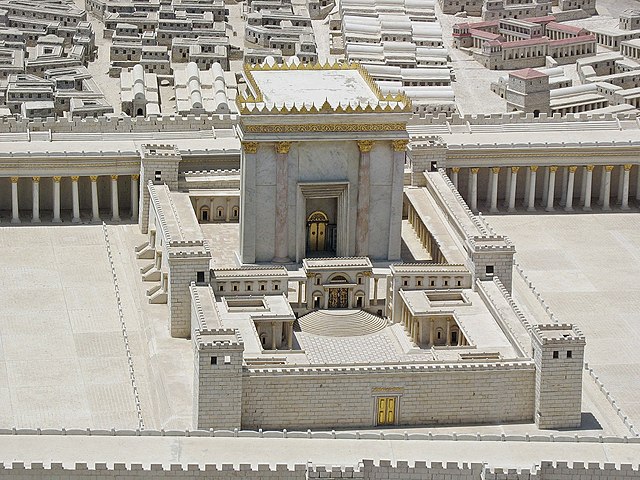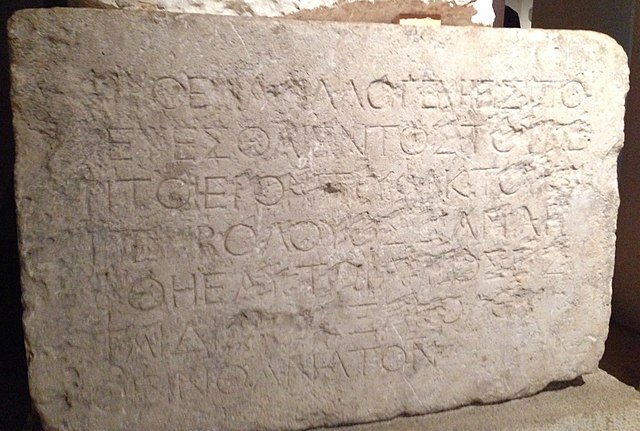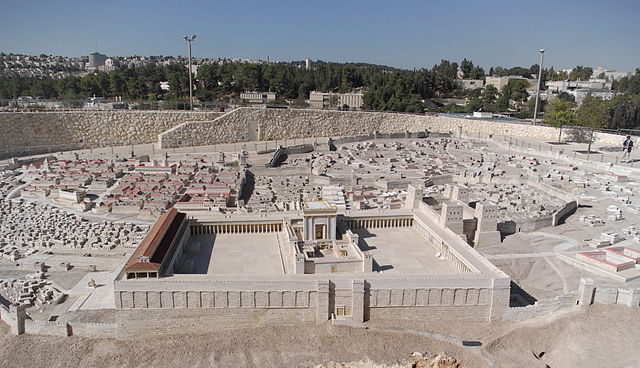The Temple in Jerusalem, or alternatively the Holy Temple, refers to the two religious structures that served as the central places of worship for Israelites and Jews on the modern-day Temple Mount in the Old City of Jerusalem. According to the Hebrew Bible, the First Temple was built in the 10th century BCE, during the reign of Solomon over the United Kingdom of Israel. It stood until c. 587 BCE, when it was destroyed during the Babylonian siege of Jerusalem. Almost a century later, the First Temple was replaced by the Second Temple, which was built after the Neo-Babylonian Empire was conquered by the Achaemenid Persian Empire. While the Second Temple stood for a longer period of time than the First Temple, it was likewise destroyed during the Roman siege of Jerusalem in 70 CE.
Model of the First Temple, included in a Bible manual for teachers (1922)
Herod's Temple as imagined in the Holyland Model of Jerusalem. It is currently situated adjacent to the Shrine of the Book exhibit at the Israel Museum in Jerusalem
Jerusalem Temple Warning Inscription
Fragment of the Temple Warning Inscription at the Israel Museum.
The Temple Mount, also known as Haram al-Sharif, al-Aqsa Mosque compound, or simply al-Aqsa, and sometimes as Jerusalem's holy esplanade, is a hill in the Old City of Jerusalem that has been venerated as a holy site for thousands of years, including in Judaism, Christianity and Islam.
Aerial view of Al-Aqsa, atop the Temple Mount
The Holyland Model of Jerusalem depicts Jerusalem during the late Second Temple period. The Temple Mount and Herod's Temple are shown in the middle. View from the east.
Picture showing what is presumed to be the Foundation Stone, or a large part of it
c.300,000 Muslims praying at Ramadan, 1996








